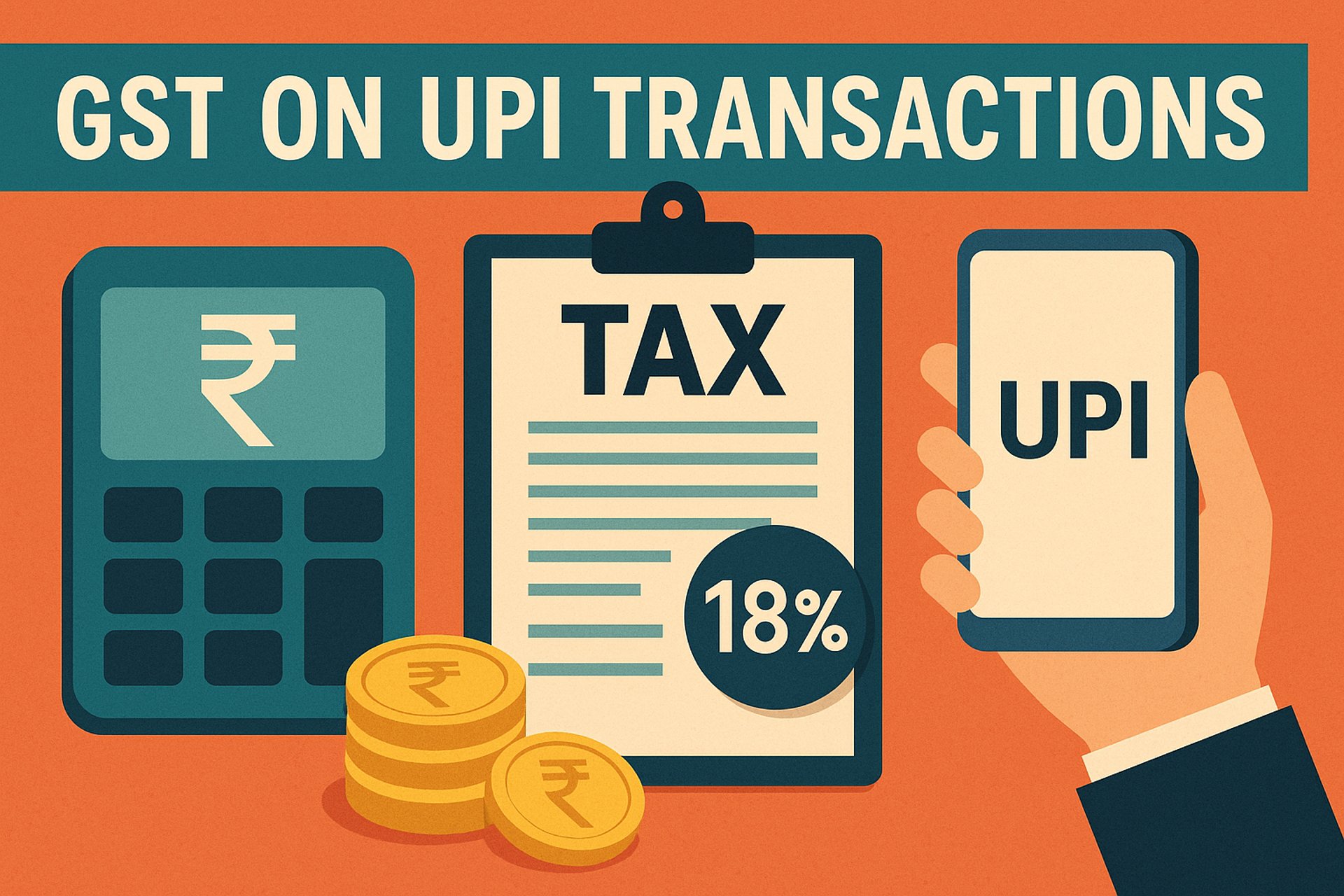
Impact of GST on UPI Transactions in India
Explore the implications of potential GST on UPI transactions in India's thriving digital payments landscape. We clarify rumors, existing regulations, and the effects on consumers and merchants in this evolving environment.
COMMUNITYTECHNOLOGYEDUCATIONACTIVISMFEATURED


What Will Happen If GST Is Levied on UPI Transactions?
Lately, India’s digital payments scene has been praised for being easy to use and free of charge. Central to this transformation is the Unified Payments Interface (UPI), which facilitates billions of smooth transactions daily. However, recent rumors and media reports have raised questions about the possibility of introducing GST (Goods and Services Tax) on UPI transactions, especially for those over a specific threshold. In this article, we’ll dive into these claims, clarify the existing regulations, and examine how this could impact consumers, merchants, and the overall digital environment.
Understanding UPI and Its Role in India’s Digital Economy
UPI has transformed the way transactions are done in India, making everyday payments fast and hassle-free. This all-in-one platform allows users to send money, pay bills, and shop without the usual headaches of cash or card transactions. The impressive growth is clear, with transaction volumes soaring from ₹21.3 lakh crore in the 2019–20 financial year to a projected ₹260.56 lakh crore by March 2025. This remarkable rise has made UPI a key player in India's push towards a cashless economy.
A Closer Look at GST and Its Application in Digital Payments
GST is an all-encompassing indirect tax aimed at simplifying the various taxes imposed by both central and state authorities. When it comes to digital payments, GST usually applies not to the full transaction amount but rather to the service fee, commonly referred to as the Merchant Discount Rate (MDR), that payment aggregators charge. After the MDR for UPI Person-to-Merchant (P2M) transactions was removed in January 2020, official announcements have made it clear that no GST is applied to the transactions themselves.
Debunking the Rumors: What’s Really Being Proposed?
There’s been a surge of media reports and online discussions lately suggesting that GST might soon apply to UPI transactions that exceed ₹2,000. This has stirred up quite a debate among consumers and those in the industry. However, representatives from the Finance Ministry and the Central Board of Indirect Taxes & Customs (CBIC) have strongly refuted these rumors. They point out that GST only pertains to the fees charged by payment aggregators, not the total transaction amount. So, while some fintech firms might still charge a processing fee (generally around 1%, which could rise a bit if GST is added), users can relax knowing that GST won’t be applied to the ₹2,000 transaction itself.
➡️ Take a scenario where a payment aggregator imposes a 1% fee on a ₹2,000 transaction, resulting in a ₹20 charge. With an 18% GST added to that fee, the total climbs by ₹3.60, leading to a final fee of about ₹23.60. This shows that the end user likely won’t notice a direct tax on the transaction amount; the financial burden falls on merchants and payment service providers instead. Insights shared on platforms like LinkedIn and Reddit echo this sentiment, clarifying that the tax is levied solely on the service charge, not the entire transaction.
Potential Impact on Merchants and Payment Aggregators
Changing Cost Structures
Merchants might see a small rise in transaction costs due to the new GST on processing fees. Payment aggregators, which already take a small percentage, may have to tweak their pricing to account for the extra 18% GST. Although the increase per transaction may be minor, it could impact profit margins significantly over time and across millions of transactions.
Administrative and Compliance Considerations
Small and medium-sized businesses (SMEs) often find themselves with extra paperwork. They have to make sure that every transaction fee is properly logged and that they file their GST returns according to the new rules. This extra tax and reporting burden might push some businesses to talk to payment providers for better deals or look into different payment options.
Ripple Effects on Prices
Although merchants are unlikely to pass on the exact GST cost directly to consumers, any increase in operational costs might eventually result in slight price hikes for goods and services. In highly competitive markets or for small-ticket transactions, even minor changes can influence consumer behavior, potentially leading to a strategic shift where merchants encourage payment splitting or revert to cash in certain high-value scenarios.
How Consumers Might Experience the Change
Indirect Impact on Transaction Prices
For the everyday user, the direct impact of GST on UPI transactions is minimal. Because the tax is levied on the fee rather than the entire transaction, most consumers will continue to enjoy the convenience and speed of UPI payments without seeing an additional tax line on their bills. However, if merchants decide to adjust their pricing to absorb these costs, consumers might witness a gradual change in the overall cost of products or services.
Behavioral Shifts
Awareness of even a slight fee might prompt some users to break larger transactions into smaller ones to stay below the threshold where fees apply. This behavior change, although subtle, could alter the transaction patterns on UPI and potentially influence how merchants design their payment processes and pricing strategies.
Broader Implications for India’s Digital Payment Ecosystem
Preserving the Promise of Digital Payments
UPI’s success has been built on its promise of free, frictionless transactions. A shift toward charging even a minimal fee—though technically on the service rather than the principal amount—could challenge that narrative. Industry experts worry that if consumers start feeling the pinch, it could dampen the momentum of India’s digital payment revolution.
Policy Goals and Tax Revenue
The government might view the expansion of GST to specific digital payment fees as a way to simplify tax compliance and increase revenue. Still, policymakers need to weigh this aim against the potential risk of eroding public trust and hindering the swift growth of digital payments. It's a tricky balance between raising tax income and fostering a thriving digital economy.
Innovation and Market Dynamics
For fintech startups and established payment aggregators, any regulatory change like this offers both challenges and opportunities. While increased compliance requirements might slow new entrants or require more robust systems, the overall market for digital payments in India remains strong. Innovation is likely to continue, driven by competition and the ongoing quest to simplify payments even further.
What’s Next? The Regulatory Outlook
Right now, there’s no definite choice to apply GST on UPI transactions. Various proposals are still being talked about, and the GST Council has sent many of these issues to expert committees for deeper examination. Both industry watchers and policymakers are closely monitoring this conversation. Until there are official updates and policy changes, everyone involved—from merchants and fintech companies to regular consumers—should stay alert for any new information.
Conclusion
The idea of imposing GST directly on UPI transactions has sparked a lot of discussion among both consumers and industry professionals. However, official announcements clarify that GST is only applicable to service fees, such as the MDR charged by payment aggregators. This indicates that while merchants might experience minor adjustments in their fees, the commitment to providing free and smooth transactions for consumers is still largely upheld. As conversations progress within the GST Council and associated committees, everyone is keenly awaiting the final policy details and their impact on India's digital payments scene.
Stay tuned for further updates and insights as India’s digital economy continues to evolve in response to regulatory changes.

